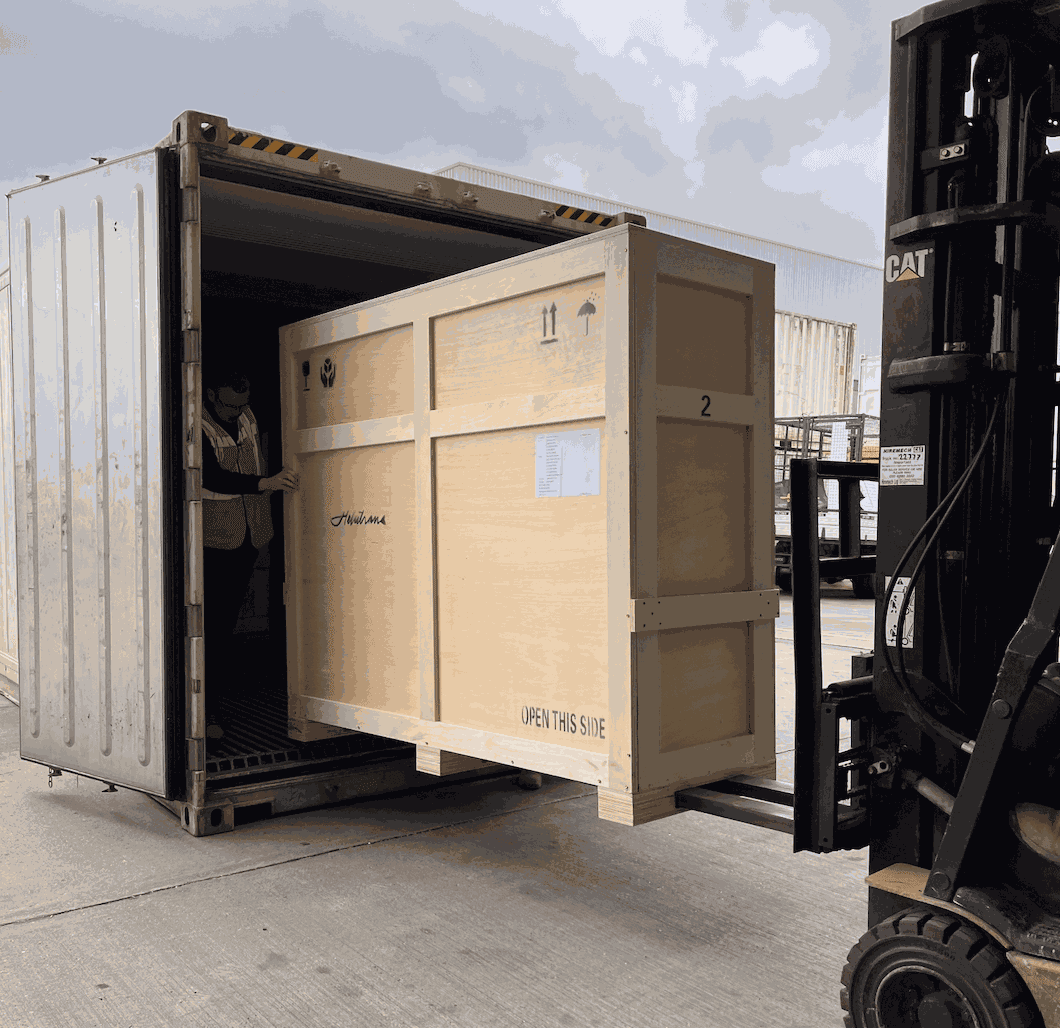Making Savings: Hannah Wright on the Sustainable Shipping Campaign
GCC’s Sustainable Shipping Campaign aims to accelerate the art sector’s transition to environmentally responsible freight operations. It is an international, cross-sector campaign calling on all stakeholders and operators in the supply chain to take responsibility and make effective changes.
GCC spoke to Hannah Wright, Registrar at Thomas Dane Gallery and Volunteer Lead of GCC’s Registrar Committee, about her experience of implementing the changes the campaign calls for and specifically her experiences of using Sea Freight.
GCC: How did you find the process of transitioning to Sea Freight? Did you face any hurdles?
Hannah Wright: Until this point, Thomas Dane Gallery had only experienced sea freight shipping on the odd occasion and it had been a necessity rather than an active choice. So, the instigation of sea freight as a more regular option with carbon emission reduction as the focus is an ongoing challenge. For the three sea freight shipments we have done, some of which are currently sailing across the ocean, it was a new process and of course inherently took a little longer to organise. However, with the GCC insurance checklist and advice from other registrars it wasn’t really any more work on my side than an air freight request. In fact, the communication in some ways was clearer and documentation/updates from the shipping agents have been wonderful. We are very much at the start of our journey, but being able to make sea freight work for two of our gallery shows this year (so far) is the best start I can ask for!
GCC: Did you make carbon savings by switching to sea freight?
HW: We have made significant carbon emission reductions.
"Using sea freight instead of air freight for 3 shipments has reduced our emissions by 34.11 tCO2e which is incredible and, not only this, but we have also saved approximately £24,000."
A small disclaimer is that one of these was a consolidated art fair shipment and the others were both full containers that we were able to fill ourselves. For smaller volumes we know the savings might not be as great. So our next challenge is a sea freight shipment from Brazil where the volume is lower; we are trying to coordinate working with other galleries in Brazil to fill it. It will be interesting to see how this goes and how it affects the savings on both emissions and cost.
GCC: Do you have any advice to other registrars or Galleries that want to move to sea freight?
HW: My main advice for galleries going from having no experience of sea freight to wanting to try it would be: start with a consolidated shipment. They happen more reliably around art fairs; use a small amount of artworks that don’t have any arrival deadline so you can go through the process without the pressure of an upcoming exhibition. This is what Thomas Dane Gallery did last year and it thoroughly helped me to understand processes, deadlines and types of delays etc.
I also want to acknowledge that the biggest hurdle is programming and this being done enough in advance for sea freight to be discussed if appropriate. It’s hard to advise as there are so many contributing factors. All I would say is bring emissions and alternative options up as much as possible and eventually, it will start becoming an engrained conversation.

